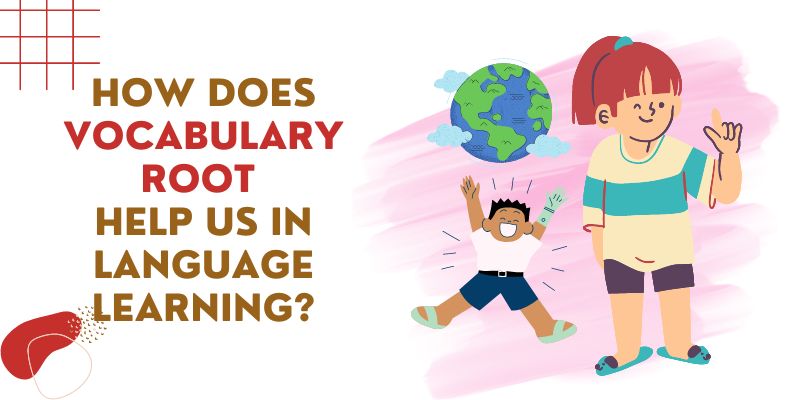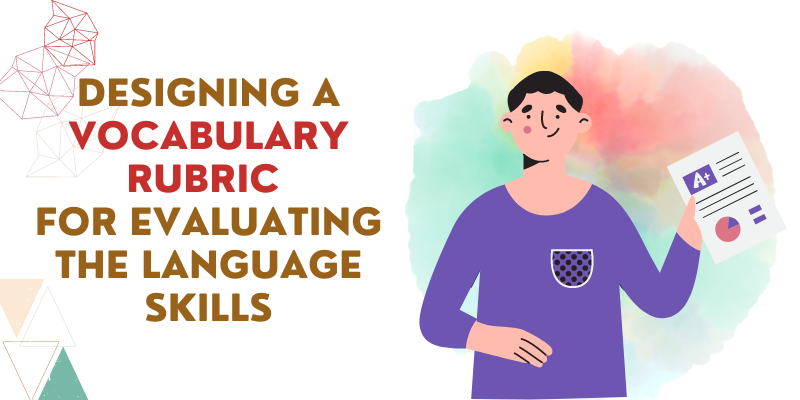
In the quest to master a new language, vocabulary stands as one of the most crucial components, bridging the gap between mere recognition and true comprehension. It’s the building blocks of communication, enabling us to express our thoughts, understand others, and connect with the world around us in more profound ways. A rich vocabulary not only enhances reading and writing skills but also boosts confidence in language use, opening doors to new cultures, ideas, and perspectives. However, expanding one’s vocabulary is not a feat achieved overnight but a continuous journey that requires dedication, strategy, and practice. This article aims to be a comprehensive guide for learners at all levels, delving into a variety of vocabulary practice activities, engaging games, and practical tips. Whether you’re just starting out or looking to polish your linguistic skills further, our exploration will equip you with effective strategies to grow your vocabulary, making the process both rewarding and enjoyable. By integrating these practices into your learning routine, you’ll discover an improvement in your language abilities and a richer engagement with the world of words.
Vocabulary serves as the cornerstone of language learning and communication, acting as the very essence of the messages we wish to convey and understand. At its core, vocabulary is not just a list of words but the key to unlocking the nuances and depths of a language. It enables learners to grasp the basic structure of language and appreciate its beauty, complexity, and power. The importance of vocabulary practice cannot be overstated; through this continuous effort, one can truly master a language and wield it with confidence.
Having a rich vocabulary extends beyond the ability to recognize and use a large number of words; it fundamentally improves the quality of both comprehension and expression. With a vast lexical repository, learners can navigate through diverse reading materials with ease, understanding subtle distinctions and the varied shades of meaning words can convey. This enhanced reading comprehension fosters a deeper engagement with texts, allowing for a more nuanced interpretation and appreciation of literature, articles, and other written forms.
Moreover, a well-developed vocabulary significantly impacts writing skills. It offers the tools to craft precise, compelling, and varied sentences, thus enabling writers to effectively convey their thoughts, arguments, and narratives. The power to choose the right word for the right context not only strengthens the clarity of communication but also enriches the text with vividness and depth.
Additionally, the confidence that comes with a robust vocabulary is undeniable. In both spoken and written forms of communication, knowing that you have the lexical resources to express yourself clearly and persuasively emboldens you to participate more actively in conversations, debates, and discussions. It fosters a sense of ease in language use, whether in academic settings, professional environments, or social interactions.
In summary, vocabulary practice is indispensable in language learning, offering a plethora of benefits from enhanced comprehension and expressive skills to increased confidence in communication. It lays the groundwork for effective language use, opening up a world of opportunities for personal, educational, and professional growth.
Embarking on the journey of vocabulary acquisition begins with foundational steps that pave the way for effective learning. First and foremost is the act of setting clear, achievable goals. Whether aiming to enhance everyday communication or mastering specific jargon for professional advancement, establishing concrete objectives provides direction and motivation. Goals not only guide the selection of words to learn but also help in tracking progress, making the process more structured and rewarding.
Understanding one’s learning style is another critical step in this initial phase. Individuals absorb and retain information differently; some may find visual aids like flashcards and diagrams particularly effective, while others might benefit from auditory methods, such as listening to podcasts or engaging in conversations. Recognizing which strategies resonate with your learning preferences can significantly enhance the efficiency and enjoyment of vocabulary practice. It encourages a personalized approach, ensuring that the time invested in learning yields maximum returns.
Creating a conducive learning environment is equally important. This environment should be free from distractions, comfortable, and equipped with the necessary resources. It could vary from a quiet corner in a home to a designated spot in a library. The key is consistency and association; over time, this space becomes synonymous with focused learning, automatically tuning the mind into study mode upon entering.
Within this framework, it’s essential to distinguish between active and passive vocabulary. Active vocabulary consists of words we can recall and use spontaneously in speech or writing, while passive vocabulary comprises words we recognize and understand when encountered in context but might not use in an active expression. The goal of vocabulary practice is to transfer words from the passive to the active category through repeated exposure, usage, and practice. This not only expands the range of one’s expressive capabilities but also deepens comprehension, ensuring a strong and versatile knowledge of the language.
Embarking on the journey of vocabulary acquisition is both exciting and demanding, requiring learners to engage in consistent and varied practice. Integrating different activities into daily routines is essential to enhance one’s vocabulary. Here are some proven methods:
- Flashcards and Spaced Repetition Systems: Flashcards have long been a staple in language learning, offering a simple yet effective way to memorize new words. When paired with spaced repetition systems (SRS), the efficiency of flashcards is significantly amplified. SRS is a technique that involves reviewing flashcards at increasing intervals, ensuring that information is transferred from short-term to long-term memory. Digital platforms like Anki or Quizlet can automate this process, making it easier for learners to track progress and focus on challenging words. Spending 10-15 minutes daily with flashcards can lead to substantial gains over time.
- Reading for Context: Encountering words in their natural context helps in understanding not only the meaning but also the usage of new vocabulary. Diverse reading materials, such as novels, newspapers, magazines, and online articles, expose learners to words in varied contexts. This method not only aids in memorization but also in comprehension, as seeing how words function in sentences provides clues about their meanings. Allocating time for reading, even if it’s just a few pages each day, can significantly boost vocabulary.
- Using Vocabulary Journals: Keeping a vocabulary journal encourages active engagement with new words. Whenever you come across a new word, jot it down along with its definition, synonyms, antonyms, and an example sentence. Regularly revisiting and updating this journal turns it into a personalized learning tool. The act of writing helps in retention, and over time, this journal becomes a valuable resource for review. Setting aside a few minutes at the end of each day to update the journal can reinforce learning and encourage exploration of words learned.
Incorporating these activities into daily routines requires commitment but does not necessitate large blocks of time. Even brief, consistent daily practice can lead to significant improvements. The key is to find moments throughout the day—such as during a commute, waiting in line, or before bedtime—when these activities can be seamlessly integrated into your schedule. By maintaining consistency and engaging actively with new vocabulary, learners can progressively expand their lexical repertoire and enhance their command of the language.
Incorporating games into vocabulary practice can transform the often daunting task of learning new words into an enjoyable and engaging experience. Vocabulary practice games not only make learning more fun but also enhance retention through interactive and dynamic challenges. Here’s a look at how various types of games can be woven into vocabulary building efforts:
Mobile Apps and Online Games: The digital age has ushered in a plethora of mobile apps and online games designed specifically for vocabulary enhancement. These platforms use gamification techniques to teach new words, test comprehension, and provide instant feedback. Apps like Duolingo or Memrise offer lessons that are structured like games, making it addictive to learn and progress. Such apps often include levels, points, and rewards to keep learners motivated. Spending time daily on these apps can significantly boost one’s vocabulary in a fun and interactive way.
Board Games and Word Puzzles: Traditional board games like Scrabble or Boggle encourage players to dive deep into their vocabulary reservoirs to come up with words that earn them points. These games, while entertaining, stimulate the brain and require players to recall and learn new words. Similarly, word puzzles such as crosswords or word searches in newspapers and magazines provide a relaxing yet mentally stimulating way to enhance vocabulary. Organizing regular game nights or setting aside time for puzzles can make vocabulary practice a much-anticipated activity.
Creating Personal Vocabulary Quizzes: Designing personal quizzes or flashcard games based on words you’re learning is another effective strategy. Tools like Quizlet allow for the creation of custom quizzes, which can be shared with friends or fellow learners for a competitive twist. This not only aids in memorization but also in applying new vocabulary in different contexts.
Examples of engaging vocabulary games include the mobile app ‘Words With Friends,’ which combines the social interaction of messaging apps with the brain-stretching challenge of word creation, and ‘Freerice,’ an online quiz game that adjusts its difficulty level as you play, allowing you to learn new words while contributing to a charitable cause.
By integrating these entertaining and educational games into your vocabulary practice routine, you can significantly enhance your learning experience, making it more effective and enjoyable.
The journey of vocabulary acquisition is a lifelong endeavor enriched by continuous discovery and practice. To weave this pursuit into the fabric of daily life, here are some vocabulary tips that can help maintain momentum and foster growth:
Engage with New Words Regularly: Make a habit of learning and using one new word daily. This could stem from your readings, conversations, or even by setting a ‘word of the day’ alert through various apps and websites. The key is to learn these words and actively incorporate them into your speech and writing, reinforcing their meaning and usage.
Learn in Context: Whenever you encounter a new word, try to understand its meaning through the context it’s used in before rushing to look it up. This strategy helps build critical thinking and deductive reasoning skills, which are invaluable in language learning. When you do look up the word, you’ll likely remember it better because of the effort involved in understanding it initially.
Utilize Technology and Social Media: In today’s digital age, technology offers endless resources for vocabulary learning. Apps specializing in language learning, social media groups focused on vocabulary building, and online forums are just a click away. Engaging with these platforms not only provides access to new words but also exposes you to how they’re used by native speakers and language learners alike.
The path to expanding your vocabulary is marked by patience, practice, and persistence. Understand that mastery won’t come overnight, but each word learned is a step forward in your language journey. Celebrate the small victories, stay curious, and keep exploring the vast and beautiful world of words. Through consistent effort and a positive mindset, the richness of vocabulary you aspire to achieve will become an integral part of your linguistic skills, opening new horizons in your personal and professional life.
Throughout this article, we’ve explored the foundational role of vocabulary in language learning and communication, underlining the importance of continuous practice and engagement. From structured activities like flashcards and spaced repetition systems to the immersion offered by reading for context and maintaining vocabulary journals, we’ve seen how diverse methods cater to different learning styles and preferences. The integration of fun through games—be it mobile apps, board games, or personalized quizzes—highlights the joy that can be found in learning new words. Moreover, practical tips for lifelong learning, including regular engagement with new words, learning in context, and leveraging technology, highlight the manageable and enjoyable aspects of vocabulary expansion.
As you journey through the vast landscape of language, remember that the methods that resonate most with you are those likely to yield the greatest benefits. Expanding your vocabulary is indeed ongoing, but it is also immensely rewarding, opening up new avenues for communication, understanding, and expression. Embrace the adventure with patience and persistence, and let the joy of discovering new words fuel your passion for learning. In doing so, you’ll not only enhance your linguistic abilities but also enrich your personal and professional life in countless ways.







